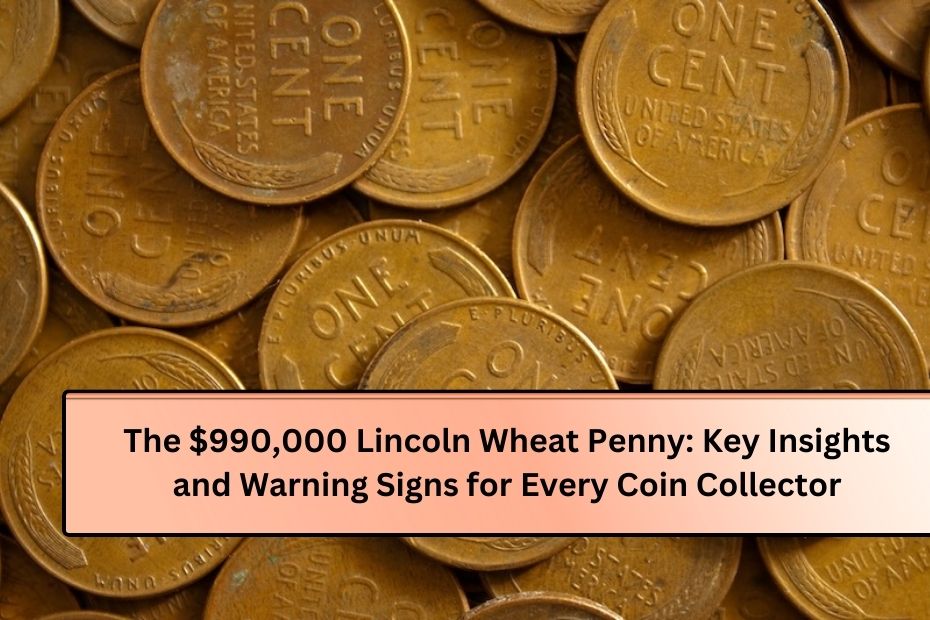Introduction Collecting rare coins is a fascinating hobby that combines history, art, and investment. However, the rise of online marketplaces has made coin collecting riskier, with scams and counterfeits increasingly common. This guide will help collectors, both beginners and seasoned enthusiasts, understand the risks of buying rare coins, focusing on the infamous $990,000 Lincoln Wheat Penny incident and practical steps to avoid being scammed.
Where to Find Rare Coins
Coin collectors can explore several platforms, each offering unique benefits:
Local Coin Shops
- Advantages: Allows in-person inspections and reliable sources of certified coins.
- Drawbacks: Limited inventory compared to online or international sources.
International Dealers
- Advantages: Ideal for collectors seeking coins from specific countries or historical periods.
- Drawbacks: Higher shipping costs and longer wait times.
Auction Houses
- Advantages: Host events with verified, high-quality coins, ensuring authenticity.
- Drawbacks: Prices can be higher due to competition and auction fees.
Online Platforms
- Advantages: Vast selection of coins and ease of shopping.
- Drawbacks: Increased risk of encountering counterfeits and scams.
Each option has pros and cons, so always verify the seller’s reputation and the coin’s authenticity.
The Case of the $990,000 Lincoln Penny
A notable event that sparked interest in 2023 was a listing on eBay for a “1920D Lincoln Wheat Cent/PCGS – Discovery Coin,” priced at a staggering $990,000. The seller claimed a connection between the coin, President Theodore Roosevelt, and the Panama Canal. This listing raised red flags due to:
- Unusual Pricing: Typically, 1920 Lincoln Wheat Pennies sell for around $40.
- Historical Claims: The claimed connection to Roosevelt and the Panama Canal was suspicious.
- Platform Choice: eBay isn’t the usual venue for selling coins of such purported value.
This example underscores the need for caution, research, and skepticism when purchasing rare coins.
Warning Signs for Identifying Fake Listings
Whether online or in-store, look out for these red flags to avoid being scammed:
Negative Seller Reviews
- Why It’s Important: Seller feedback gives insight into their reliability and authenticity claims. Poor reviews, especially about counterfeit items, should serve as a warning.
Lack of Detailed Images
- Why It’s Important: Quality images are crucial for confirming a coin’s condition and authenticity. Listings with only a few or unclear photos can signal a scam.
Absence of Certification
- Why It’s Important: Genuine coins should be certified by recognized grading services like PCGS, NGC, ANACS, SEGS, or ICG. Uncertified coins are at a higher risk of being counterfeit.
Unrealistic Pricing
- Why It’s Important: If a price is too good (or too high) to be true, it likely is. Compare the listing price with typical market values for that coin.
Understanding the Lincoln Wheat Penny
The Lincoln Wheat Penny, first minted in 1909, has historical significance. President Theodore Roosevelt, inspired by artist Victor Brenner’s work on a Lincoln plaque, wanted the penny to honor President Abraham Lincoln. Collectors value these pennies, but standard prices for common years are much lower than exaggerated listings.
| Coin Feature | Significance |
|---|---|
| Mint Year | The coin’s year can impact its value. |
| Designer | Designed by Victor Brenner in honor of Lincoln. |
| Market Value | Typically around $40 for common years. |
Best Practices for Safe Coin Collecting
To have a safe and enjoyable experience, consider these tips:
Conduct Thorough Research
- Familiarize yourself with coin values, history, and market trends.
Verify Authenticity
- Only purchase coins certified by trusted grading services.
Check Seller Reputation
- Always review seller history and customer feedback, especially online.
Request More Information
- Don’t hesitate to ask for additional images or details.
Trust Your Instincts
- If something feels off about a listing or deal, it’s often wise to walk away.
Seek Expert Advice
- Join forums or consult experienced collectors for insights.
Conclusion
Coin collecting offers a glimpse into history, artistry, and value appreciation. However, without caution, buyers risk encountering scams or overpriced listings. By researching the coins you’re interested in, verifying their authenticity, and recognizing the signs of fraud, you can pursue this hobby safely and enjoyably. Remember, knowledge is your strongest tool in the world of rare coin collecting.
FAQ’s
What makes the Lincoln Wheat Penny valuable?
The Lincoln Wheat Penny’s value depends on its rarity, condition, and historical significance, especially for certain mint years.
How can I tell if a coin is authentic?
Authentic coins usually have certification from reputable grading agencies like PCGS or NGC.
Is buying coins on eBay safe?
Red flags include a lack of certification, unclear photos, poor seller reviews, and prices too good (or too high) to be true.
What should I research before buying a rare coin?
Study the coin’s historical background, market value, and recommended grading standards to make informed purchases.

